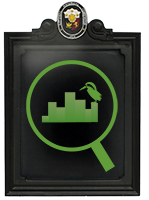 Santa Catalina Holy Cross
Santa Catalina Holy CrossSanta Catalina Holy Cross is a Registered Property, Municipality of Santa Catalina, Ilocos Sur located at Santa Catalina, Ilocos Sur, Region I.
In the 15th century, Ciudad Fernandina was under Spanish rule and Sta. Catalina was part of the ciudad. When the Spaniards sailed westward, they arrived at the sand dunes of Mindoro and Pantay (now Vigan City) overlooking the Govantes River. This river serves as the natural boundary of Vigan and Sta. Catalina. They noticed a small island lying across the river. They crossed the river with rafts and arrived at a place called "Cabittaogan." This place is called "Cabittaogan" because of the abundance of a tree species called "palomaria" or "bitaog" in local dialect.
The Spanish forces planted a big wooden cross at the exact location where they rest. The cross is primarily the symbol of Christianity. It marks the Christianization of the inhabitants. It also serves as a symbol of conquering the place. No documentary evidence was found to show the exact date as to when the cross was planted. However, the fact that the cross still stands at the exact spot where it was planted remains, even after many centuries. The original cross was made of wood. Concrete was later added to reinforce the structure. It was covered with white paint and has just been repainted to make it look neat. The inscription on the cross was covered with cement which made the markings no longer visible.
The authorities decided to cover the holy cross with cement to preserve it. The cross was taller before. It got smaller because of numerous road rehabilitations over time.
The structure marks the period in history of the town which has a significant contribution to the culture formation of the locals. It symbolizes Catholic faith, the predominant religion in the locality.